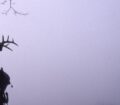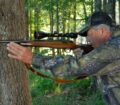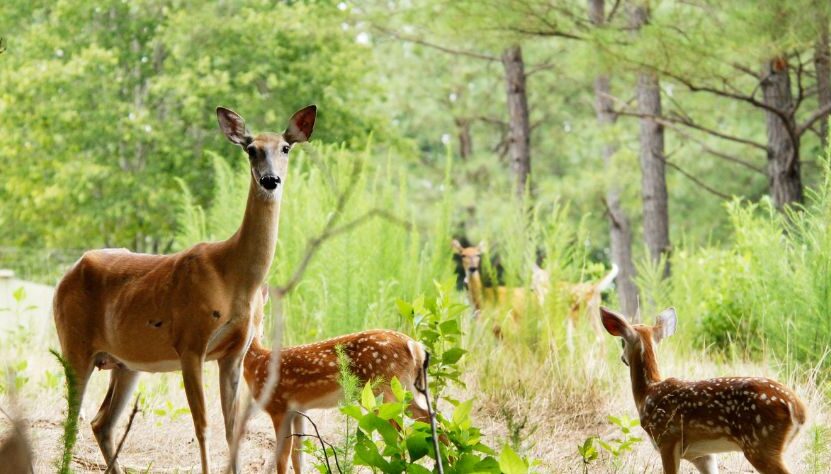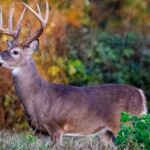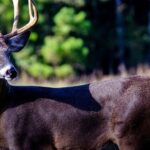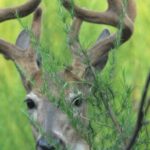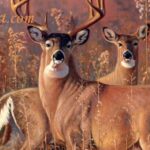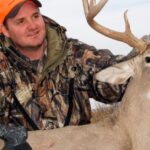Editor’s Note: “Deer learn to fear man just like any other animal learns to fear man,” Dr. Keith Causey, a retired professor of wildlife science for the Department of Zoology and Wildlife Sciences at Auburn University and avid hunter, says. “Man’s been a predator, and deer have been a prey species for thousands of years. The deer that don’t fear man has been weeded out of the population. Fear by prey of a predator comes from experience and from being taught by the more mature members of the deer population.”
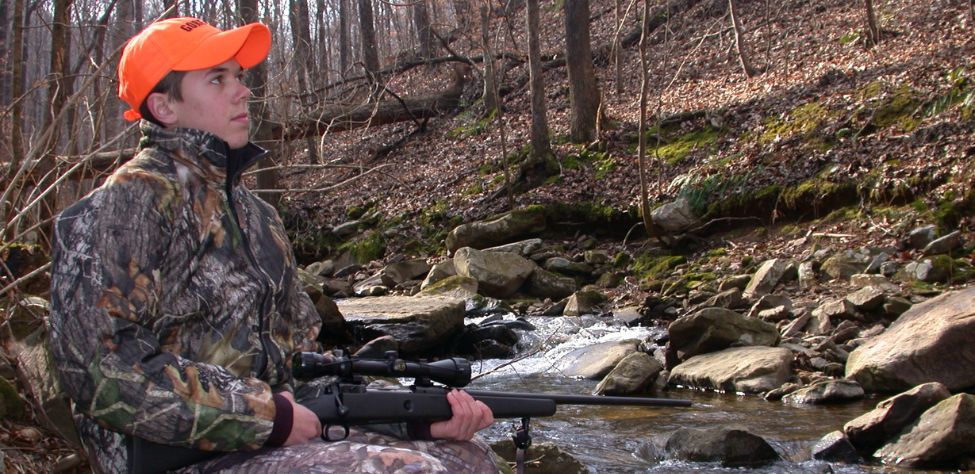
Dr. Robert Sheppard of Tuscaloosa, Alabama, a master bowhunter who teaches in bowhunting and black powder schools throughout the South, also has been a cardiologist who had to pay close attention to even the smallest detail when practicing medicine. This trait of his also applies to his deer hunting. “Most hunters believe deer learn to flee from hunters when the animals see men, and that deer associate sighting a man with the knowledge that man is a predator.,” Dr. Sheppard reports. “However, I tend to believe deer learn to fear first the odor man gives off. Then at some time during the deer’s development, the animal associates that odor with a visual sighting of man. Walking through the woods, your body produces an odor that smells much stronger to the deer than to you. I’m convinced deer recognize that human odor as a dangerous smell and do all they can to avoid it.”
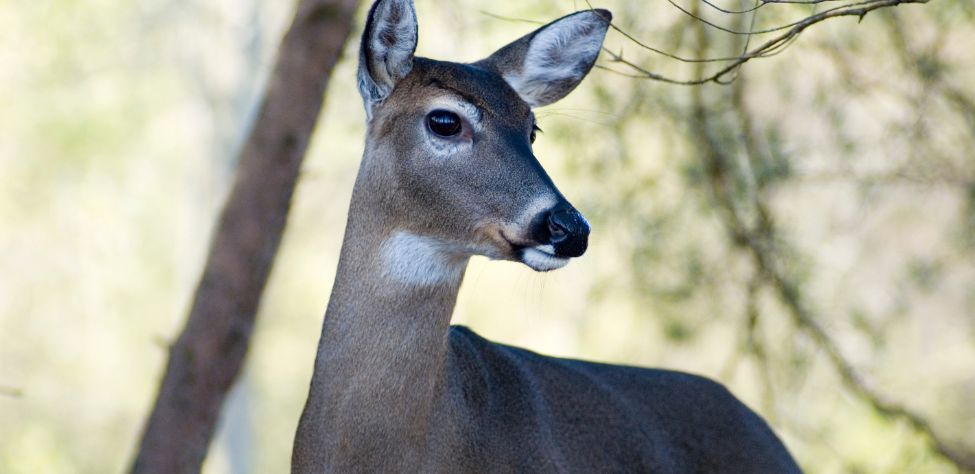
Brad Harris of Neosho, Missouri, one of the nation’s leading deer-hunting authorities, outdoor videographer, and well-known hunter, explains that “In the woods, deer are aware of all the sights, smells and sounds of the forest. When man comes into the forest, man presents an unfamiliar sight, sound and smell. Because the deer’s natural instincts teach him to avoid anything not native to his environment, this may explain how deer learn to dodge hunters. Also, we know from spending thousands of hours watching deer in the wild that a tremendous amount of information is transferred from the doe to the fawn during that first year of life. If you’ve watched young fawns with a doe, she will communicate danger, caution, fear, and calmness to her offspring.”

According to Dr. Causey, “Scientists have observed that initially, fawns use a strategy of freezing to hide from danger until they reach five to seven days old. After that time, they flee from man or any other predator or animal that approaches them.” Dr. Sheppard feels fawns fear man, particularly in the South, because, “Bow season starts early in the fall – often from mid-August to mid-October. In most of the areas where hunting pressure is heavy, by the time gun season arrives in November, many of the fawns, even those still with spots, have had enough encounters with human odor in the company of their mothers to recognize the smell as a danger signal. They have learned from their mothers while walking through the woods and seeing their mothers’ reactions when they encounter human smells. The doe will jerk her head up, snort and run off when she and the fawn smell humans. The next time the fawns encounter the smell, they know it means danger.”

How to Hunt and Take Big Buck Deer on Small Properties
In this book, you’ll hear from 14 hunters who either have gained permission or leased properties as small as six acres to as much as 250 acres, and how they consistently take older-age-class bucks off these little lands.
VERSIONS: AUDIBLE, KINDLE & PRINT

Jim Crumley’s Secrets of Bowhunting Deer
Using a black magic marker and a gray work jumpsuit, Jim Crumley of Buchanan, Virginia, drastically changed the nature and purpose of hunting camouflage when he created the first sportsman’s camouflage – Trebark. Crumley’s love of bowhunting and his desire to be more invisible changed hunting clothing forever.
In this hunting guide, he shares the wisdom that he’s learned throughout his lifetime about how to be a hunter, how to find a deer lease, how to scout for deer, and more.
Special features include how to:
- Have a magic 60 acres to hunt
- Decide the best equipment to use
- Find deer year-round
- Locate land to hunt
- Know the best place to put your tree stand
- Get bucks within bow range
VERSIONS: AUDIBLE, KINDLE & PRINT

How to Hunt Deer Like a Pro
How do you know if the land you hunt has a trophy deer on it? Wildlife manager Bob Zaiglin, of Uvalde, Texas and Jim Crumley, the father of modern-day hunting camouflage, tells you how to find out. GPS can make finding and taking that trophy buck easier. This hunting guide will teach you how to hunt big bucks where no one else can find them, how to call deer, and how to become versatile as a deer hunter, so that if one deer tactic doesn’t work, another one will.
In the chapter, “How to find Bucks at Scrape,” Dr. Keith Causey, retired professor of Wildlife Science at Auburn University, describes the best way to hunt a scrape.
Brad Harrison of Neosho, Missouri, is a nationally-known videographer, professional deer hunter and master at calling deer. Another master is Will Primos of Primos Game Calls. These two experts will tell the best deer calls and when to use them in this book.
And for over 20 years, Bo Pitman, lodge manager of White Oak Plantation, has been studying deer movement patterns. He explains what types of conditions are best for predicting deer movement.
VERSIONS: AUDIBLE, KINDLE & PRINT

Deer hunting and deer hunters are drastically changing each year. To learn new techniques for hunting deer and have more places to hunt, I’ve interviewed some of the best deer hunters in the nation and share their tactics in How to Hunt Deer Like a Pro: Volume II.
In Chapter 10, Jacob Lamar tells you his tactics for consistently taking older-age-class bucks on public lands in several states. Chapter 11, Bob Walker explains how to find places on public lands where you can hunt that 99 percent of the other hunters never have considered hunting. The Bonus Chapter with David Ramey tells you how, where, when and with what equipment to take big Kansas bucks on public lands by hunting in 100-degree weather when others won’t hunt.
Chapter 13, Mark Drury, his family and his guests take mature bucks every season by having more small places to hunt rather than one large property. Drury explains the strategy of having satellite farms to hunt that only may be 50-150 acres each or less. Chapter 15, Pat Reeve, who hunts far-northern states and Canada, says, “I don’t like hunting for mature bucks until the weather is 20 degrees or less.” Chapter 4, Dr. Larry Marchinton says that funnels are the most-reliable stand sites to hunt for big bucks and tells why.
VERSIONS: AUDIBLE & PRINT
Tomorrow: How to Reduce Hunting Pressure on Deer

